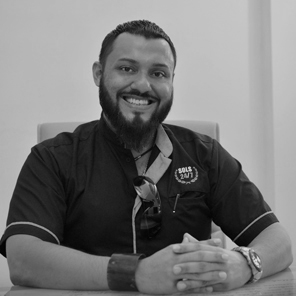In rush towards world class digital infrastructure, digital gap must be addressed: Page 3 of 3
By Karamjit Singh February 2, 2017
No one doing anything to educate poor on benefits from Digital Economy
 Raj Ridvan Singh (pic, right), founder and CEO of social enterprise 24/7 Sdn Bhd is someone who is painfully aware of this digital gap. Having experienced the double frustration of trying to get fixed line access to areas deemed as “commercially unviable” and seeing Malaysians from the lower income groups ignorant of the economic upliftment possible because no one has reached out to educate them, he certainly wants more done.
Raj Ridvan Singh (pic, right), founder and CEO of social enterprise 24/7 Sdn Bhd is someone who is painfully aware of this digital gap. Having experienced the double frustration of trying to get fixed line access to areas deemed as “commercially unviable” and seeing Malaysians from the lower income groups ignorant of the economic upliftment possible because no one has reached out to educate them, he certainly wants more done.
He is scathing in his remarks. “The reality is that bringing actual access to the poor is non-existent. Sure you have the USP Fund and its projects like the Pusat Internet Desa [these have been renamed in 2014 to Pusat Internet 1Malaysia] but some of them are becoming white elephants,” he contends.
Running four community centres in Sabah, one of which is also a boarding centre, Raj has had a telco refuse to provide a village with broadband even though it is only 20 mins away from the capital of Sabah, Kota Kinabalu. Use dongles was the helpful suggestion from the telco.
“No one is doing anything to educate the poor on how they can benefit from the Digital Economy,” he says, using the marker of households earning a total income of less than RM2,000 a month. “You are deluding yourself if you think the poor will educate themselves once they discover the internet. If they don’t read to begin with, it’s a dream to think they will empower themselves when they go online,” says Raj who has been at the forefront of using technology to empower the marginalised through a PC refurbishment programme that has seen Sols 24/7 provide refurbished desktops. Over the past 2 ½ years it has provided 2,300 desktops to various homes and NGOs.
That is if they can get online.
Raj’s experiences provide a stark and cold contrast to the calls for higher speeds, lower prices from those already in the stream of the Digital Economy and who hunger for more versus those who are not in in yet and may never be, because they don’t have a voice.
While there is no doubt that the Digital Economy infrastructure will get better and may even hit the desired world-class levels aspired by the MCMC, for the impact of the Digital Economy to be felt by most Malaysians, more needs to be done on inclusivity.
And Ali Hanafiah does highlight a slew of projects that have been identified with the objective of providing broadband connectivity to the users in sub urban and rural areas such as Rural Broadband (RBB), Pusat Internet 1Malaysia (PI1M), Fiberization Project, 3G Expansion and development of new telecommunication towers with broadband services.
To afford more Malaysians an opportunity to participate in the Digital Economy, there is clearly an urgency in executing these projects.
Related Stories:
An app-etite for success in the digital economy in 2017 and beyond
Turning the spotlight on ‘soft’ infrastructure
Asia Pacific to add 600mil new mobile subscribers by 2020: GSMA study
Celcom and Risda to bring the Internet to more rural areas
For more technology news and the latest updates, follow us on Twitter, LinkedIn or Like us on Facebook.
Pages
- « first
- ‹ previous
- 1
- 2
- 3


